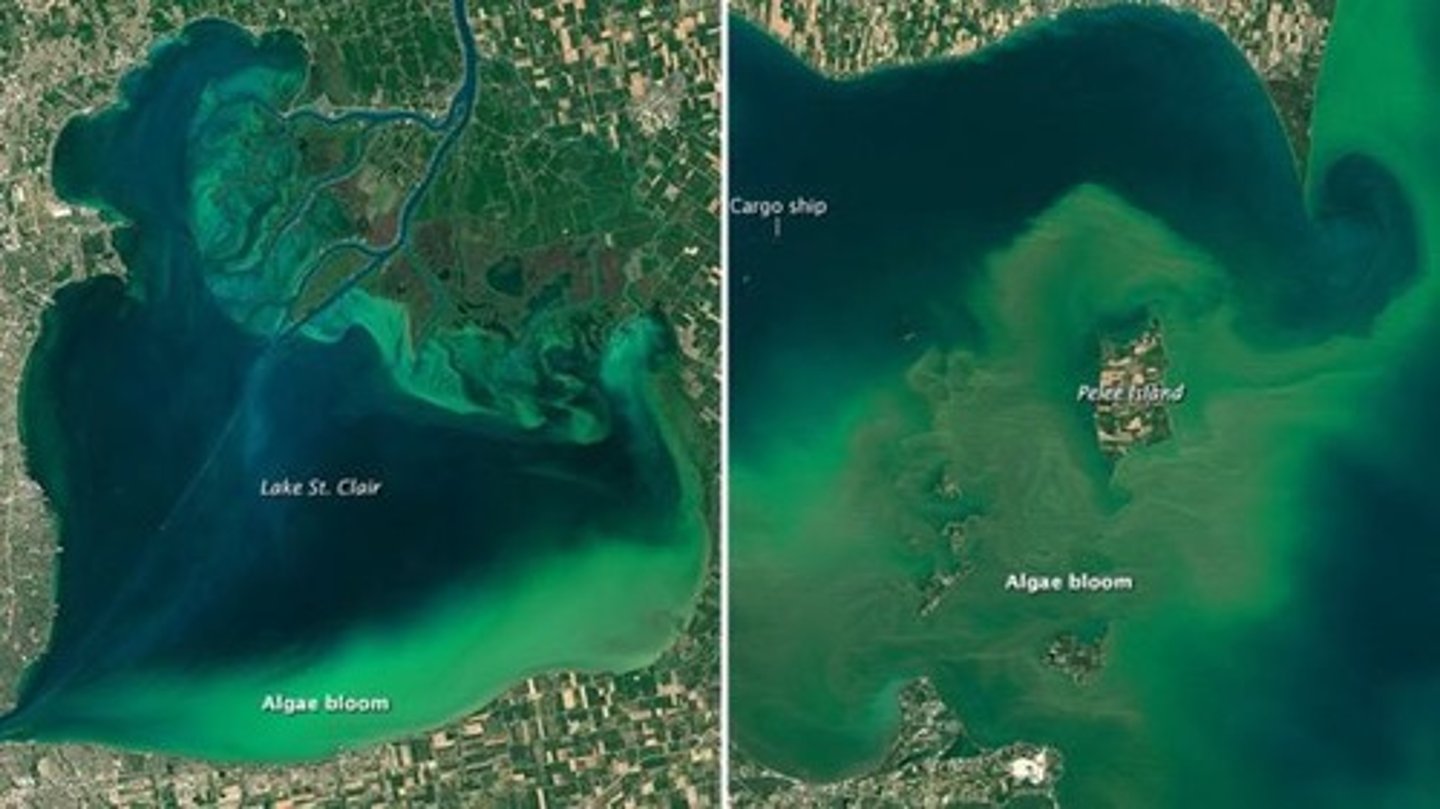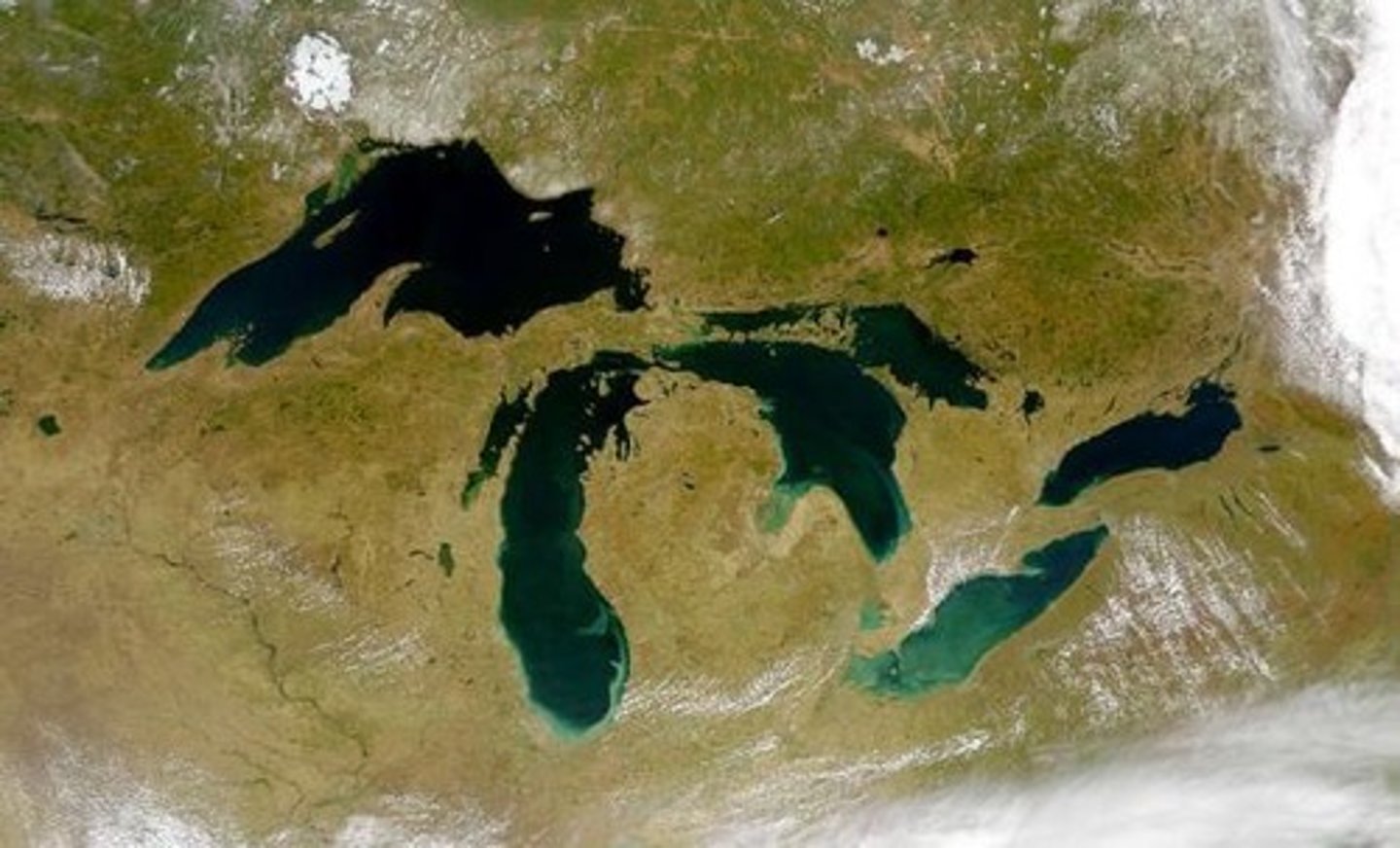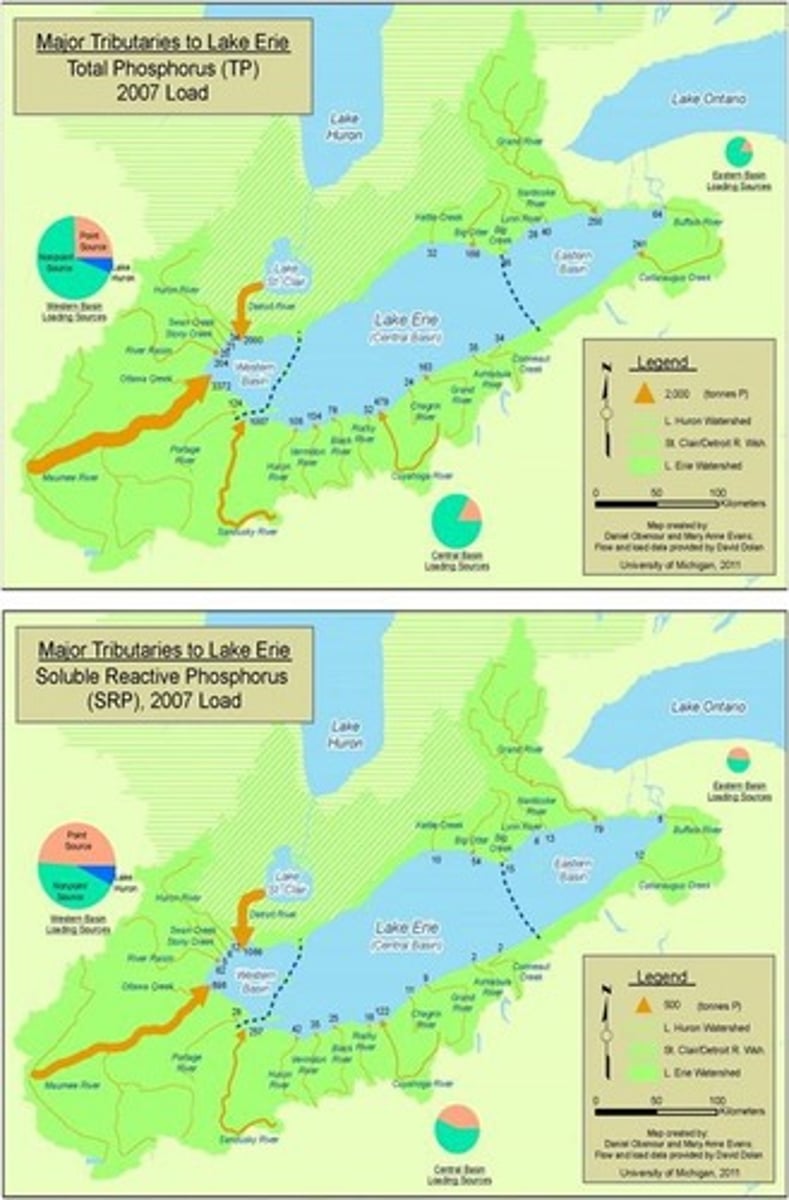Nutrient Pollution, Eutrophication, and Sustainability in Water Ecosystems
1/24
There's no tags or description
Looks like no tags are added yet.
Name | Mastery | Learn | Test | Matching | Spaced |
|---|
No study sessions yet.
25 Terms
What is nutrient pollution?
The addition of nitrogen and phosphorus to large water bodies, promoting excessive growth of algae and other vegetation.
What is eutrophication?
The process of nutrient enrichment in water bodies leading to excessive algae growth, oxygen depletion, and water quality deterioration.
What are the consequences of eutrophication?
Oxygen depletion (dead zones), toxins in water, water quality deterioration, biodiversity loss, and economic impacts on tourism and fish industry.
What is a dead zone?
An area in a water body with low oxygen levels, often caused by eutrophication, where aquatic life cannot survive.
What percentage of nutrient load to Lake Erie comes from the Western Basin?
60%
What is the definition of sustainability according to the United Nations?
Meeting the needs of the present without compromising the ability of future generations to meet their own needs.
What are the three pillars of sustainability?
People, Planet, and Profit, often referred to as the Triple Bottom Line (TBL).
What does ecological footprint analysis measure?
The amount of biologically productive land and water required to sustain a person at their current consumption levels.
What is the average ecological footprint of a Canadian?
7.01 hectares/person.
What is the Human Development Index (HDI)?
An indicator that assesses the development of a country by including aspects of society beyond economic growth.
What are some factors that influence sustainability?
Population increases, socio-economic changes, climate change, and resource changes.
What was the Canadian government's goal regarding agriculture fertilizer emissions by 2030?
To achieve a 30% reduction from 2020 levels to reduce greenhouse gas emissions.
What is the impact of land subsidence?
It occurs when groundwater is withdrawn, causing the ground to compact and potentially leading to significant damage.
What areas are most affected by groundwater depletion?
West Asia, the central United States, northwestern India, and northeastern China.
What is the significance of the Operational Land Imager (OLI) on Landsat 8?
It captures images of environmental phenomena such as algal blooms in large water bodies.

What are the economic impacts of nutrient pollution?
Negative effects on tourism, the fish industry, and increased water treatment costs.
What are neurotoxins and hepatotoxins?
Types of toxins that can be present in water due to algal blooms, affecting human health and aquatic life.
What is the relationship between sustainability and innovation?
Human ability to innovate may help address sustainability challenges, but its effectiveness over time is uncertain.
How does scale affect sustainability practices?
An activity that is sustainable on a small scale may not be sustainable when applied at larger regional or global levels.
What is the ecological footprint of China?
2.21 hectares/person.
What is the ecological footprint of India?
0.91 hectares/person.
What is the ecological footprint of the United States?
8.00 hectares/person.
What are ecosystem services?
Benefits provided by ecosystems that can be positively or negatively influenced by human activities.
What is the significance of the Great Lakes in the context of nutrient pollution?
They are affected by algal blooms due to nutrient runoff, impacting water quality and ecosystems.

What is the contribution of agricultural activities to dead zones?
Agricultural runoff containing nitrogen and phosphorus contributes significantly to the formation of dead zones.
